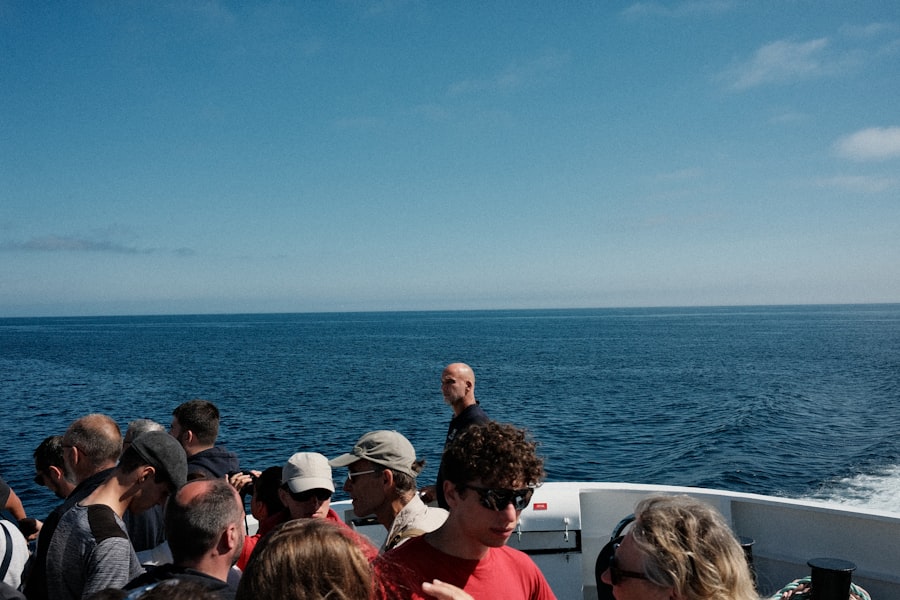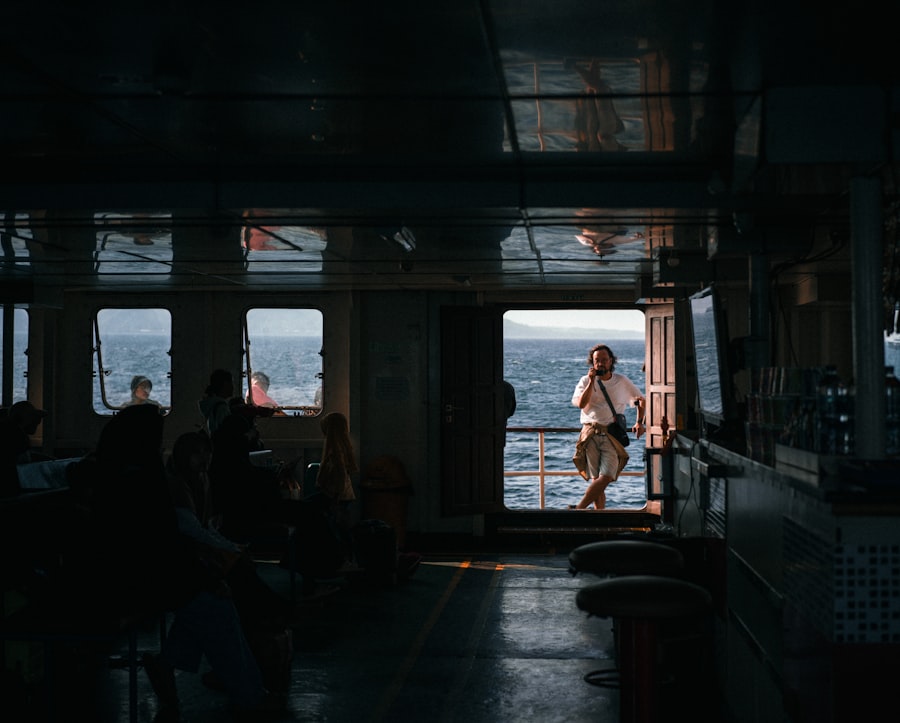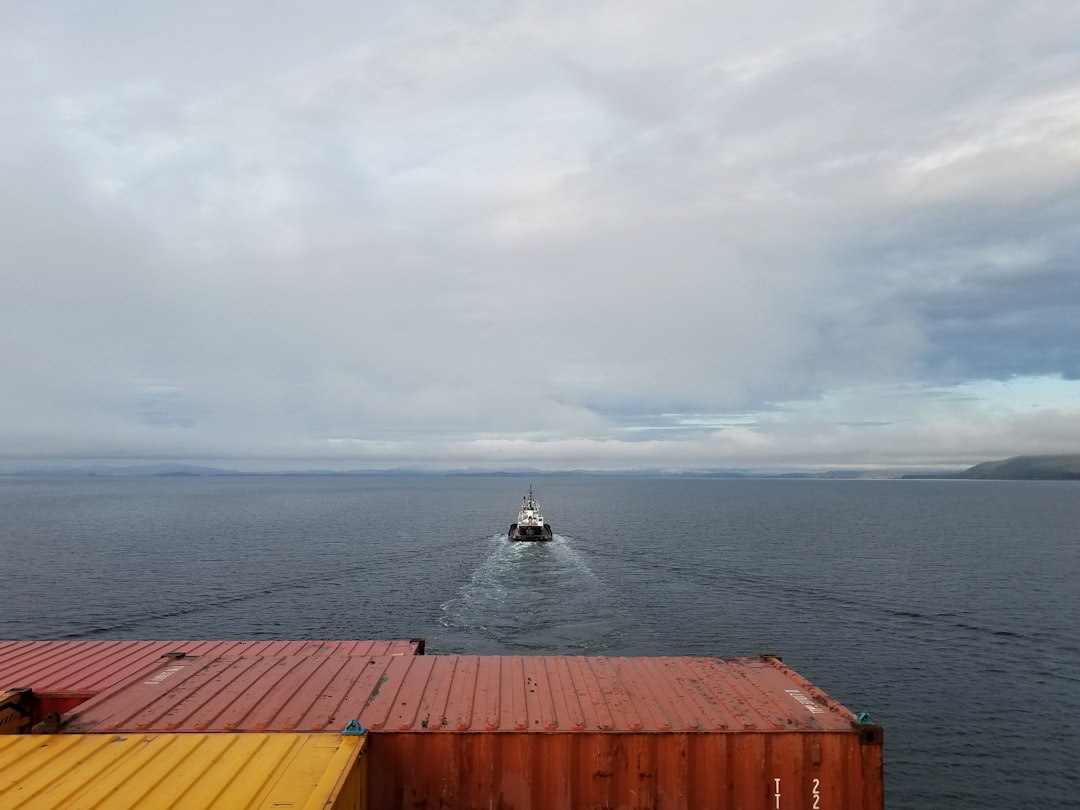The Drake Passage, a body of water that separates South America from Antarctica, is renowned for its tumultuous seas and unpredictable weather. Stretching approximately 600 miles, it serves as a critical maritime route for vessels traveling to and from the Antarctic region. Named after the English explorer Sir Francis Drake, who navigated these waters in the late 16th century, the passage has become synonymous with adventure and peril.
For many, crossing the Drake Passage is not merely a journey; it is a rite of passage that tests the mettle of sailors and travelers alike. The significance of the Drake Passage extends beyond its geographical location. It is a vital conduit for marine life and plays a crucial role in global ocean currents.
The confluence of the Atlantic and Pacific Oceans creates a unique ecosystem that supports a diverse array of wildlife, including whales, seals, and seabirds. As such, the Drake Passage is not only a challenge for navigators but also a sanctuary for nature enthusiasts and researchers eager to study its rich biodiversity.
Key Takeaways
- The Drake Passage is a body of water between South America’s Cape Horn and the South Shetland Islands of Antarctica.
- The Drake Passage has a rich history of exploration and navigation, dating back to the 16th century.
- Navigating the Drake Passage presents challenges such as strong winds, rough seas, and unpredictable weather conditions.
- Weather and sea conditions in the Drake Passage can be extreme, with frequent storms and high waves.
- The Drake Passage has a significant impact on travelers, often causing seasickness and discomfort.
The History of the Drake Passage
The history of the Drake Passage is steeped in exploration and discovery. Long before it was named after Sir Francis Drake, indigenous peoples inhabited the southern coasts of South America, navigating these waters in their own traditional ways. However, it was during the Age of Exploration in the 16th century that European interest in the passage surged.
Sir Francis Drake’s circumnavigation of the globe brought attention to this treacherous stretch of water, marking it as a significant route for future explorers. In the centuries that followed, the Drake Passage became a focal point for whalers, sealers, and later, scientific expeditions. The passage was often viewed as a gateway to the Antarctic, drawing adventurers eager to uncover its mysteries.
The early 20th century saw an increase in scientific research in the region, with expeditions aimed at understanding the unique marine ecosystems and climatic conditions. This rich history has contributed to the passage’s reputation as both a perilous route and a site of profound natural beauty.
The Challenges of Navigating the Drake Passage

Navigating the Drake Passage presents numerous challenges that can test even the most seasoned mariners. The unpredictable weather patterns and strong currents create a volatile environment that can change rapidly. Sailors must contend with high winds, towering waves, and sudden storms that can arise without warning.
These conditions make it essential for navigators to possess not only skill but also an intimate understanding of the passage’s unique characteristics. Moreover, the passage’s geographical features add another layer of complexity to navigation.
Additionally, icebergs and sea ice can drift into shipping lanes, further complicating navigation efforts. As a result, crossing the Drake Passage requires meticulous planning and constant vigilance to ensure safe passage through its treacherous waters.
Weather and Sea Conditions in the Drake Passage
| Month | Average Temperature (°C) | Wind Speed (km/h) | Sea State |
|---|---|---|---|
| January | 5 | 35 | Rough |
| February | 4 | 40 | Rough |
| March | 3 | 45 | Rough |
| April | 1 | 50 | Rough |
| May | -1 | 45 | Moderate |
| June | -3 | 40 | Moderate |
The weather in the Drake Passage is notoriously unpredictable, characterized by rapid changes that can occur within hours. The convergence of cold Antarctic waters with warmer currents from the north creates a dynamic atmosphere that fuels storms and high seas. Sailors often describe the passage as having “four seasons in one day,” where calm conditions can swiftly give way to violent gales and towering swells.
Sea conditions in the Drake Passage are equally challenging. The infamous “Drake Shake” refers to the intense turbulence that can occur during storms, with waves reaching heights of up to 30 feet or more. These conditions can make navigation extremely difficult and pose significant risks to vessels.
Understanding these weather patterns is crucial for anyone attempting to cross the passage, as they can dictate not only safety but also the overall experience of the journey.
The Impact of the Drake Passage on Travelers
For travelers embarking on expeditions to Antarctica, crossing the Drake Passage is often seen as both an exhilarating adventure and a daunting challenge. Many adventurers view this crossing as a rite of passage, a test of endurance that adds to the allure of their journey. The experience can be transformative, as travelers confront their fears and embrace the raw power of nature.
However, the impact of crossing the Drake Passage extends beyond personal growth. The experience can also foster a deeper appreciation for the environment and its fragility. Witnessing the dramatic landscapes and diverse wildlife along the way often ignites a passion for conservation among travelers.
As they navigate this remarkable waterway, many find themselves inspired to advocate for the protection of Antarctica’s unique ecosystems.
Strategies for Navigating the Drake Passage

Successfully navigating the Drake Passage requires careful planning and strategic decision-making. One key strategy is to monitor weather forecasts closely before embarking on a crossing. Understanding prevailing wind patterns and potential storm systems can help sailors choose optimal departure times and routes.
Additionally, experienced navigators often rely on historical data to anticipate conditions based on seasonal trends. Another important strategy involves selecting appropriate vessels for the journey. Modern ships designed for polar exploration are equipped with advanced technology and reinforced hulls to withstand harsh conditions.
These vessels often feature stabilizers that help mitigate rolling in rough seas, enhancing passenger comfort during crossings. By choosing well-equipped ships and employing experienced crews familiar with the passage’s challenges, travelers can significantly increase their chances of a safe and successful journey.
The Worst Crossing Yet: A Firsthand Account
One traveler’s harrowing account of crossing the Drake Passage serves as a stark reminder of its unpredictable nature. As they embarked on their expedition, excitement filled the air; however, within hours, dark clouds loomed overhead, signaling an impending storm. The once-calm waters transformed into a chaotic sea as waves crashed against the vessel with relentless force.
The traveler recounted how they clung to their seat as the ship pitched violently from side to side. Many passengers succumbed to seasickness, while others braved the elements on deck to witness nature’s fury firsthand. Despite feeling overwhelmed by fear and uncertainty, they found solace in camaraderie with fellow travelers who shared their plight.
This shared experience forged bonds that would last long after they reached calmer waters.
Safety Precautions for Crossing the Drake Passage
Safety is paramount when crossing the Drake Passage, given its reputation for treacherous conditions.
These briefings typically cover safety protocols, emergency procedures, and tips for managing seasickness—an all-too-common affliction during crossings.
Additionally, modern ships are equipped with advanced safety features such as lifeboats, life rafts, and emergency beacons to ensure passenger safety in case of emergencies. Crew members undergo rigorous training to handle various scenarios that may arise during crossings, from medical emergencies to equipment failures. By prioritizing safety measures and fostering awareness among travelers, operators can help mitigate risks associated with navigating this formidable passage.
The Role of Technology in Navigating the Drake Passage
Advancements in technology have revolutionized navigation through challenging waters like those found in the Drake Passage. Modern vessels are equipped with sophisticated navigation systems that utilize GPS technology, radar, and sonar to provide real-time data on weather conditions and underwater topography. This information allows crews to make informed decisions about routes and adjust course as needed.
Moreover, communication technology has improved significantly over recent years, enabling vessels to stay connected with meteorological services and other ships in the area. This connectivity enhances situational awareness and allows crews to receive timely updates on changing weather patterns or potential hazards ahead. As technology continues to evolve, it plays an increasingly vital role in ensuring safe navigation through one of the world’s most challenging maritime routes.
The Future of Crossing the Drake Passage
Looking ahead, the future of crossing the Drake Passage holds both promise and challenges. As climate change continues to impact global weather patterns, shifts in ocean currents may alter conditions within this critical waterway. Researchers are closely monitoring these changes to better understand their implications for navigation and marine ecosystems alike.
Additionally, advancements in ship design and technology will likely enhance safety and comfort for travelers venturing into these waters. Innovations such as hybrid propulsion systems may reduce environmental impacts while improving fuel efficiency during crossings. As interest in Antarctic exploration grows among travelers seeking adventure and natural beauty, ensuring sustainable practices will be essential for preserving this unique region for future generations.
The Drake Passage as a Rite of Passage
In conclusion, crossing the Drake Passage remains an iconic experience that embodies both adventure and challenge. For many travelers, it serves as a rite of passage—a test of resilience against nature’s formidable forces that ultimately leads to personal growth and transformation. The rich history surrounding this waterway adds depth to its allure while highlighting humanity’s enduring quest for exploration.
As travelers navigate its unpredictable waters, they forge connections not only with fellow adventurers but also with nature itself—gaining insights into our planet’s fragility and beauty along the way. With continued advancements in technology and a commitment to sustainability, future generations will undoubtedly find their own stories woven into the tapestry of this remarkable passage—a testament to its enduring significance in maritime history and human exploration.
Navigating the treacherous waters of the Drake Passage is often considered one of the most challenging maritime experiences due to its unpredictable weather and rough seas. For those interested in learning more about the challenges and adventures associated with such crossings, a related article can be found on MyGeoQuest. This article delves into the experiences of sailors and adventurers who have braved these formidable waters. You can read more about these thrilling journeys by visiting the MyGeoQuest article.
WATCH NOW! Drake Passage: Earth’s Deadliest Waters Revealed
FAQs
What is the Drake Passage?
The Drake Passage is the body of water between the southern tip of South America and the northern tip of the Antarctic Peninsula. It is known for its rough seas and challenging sailing conditions.
What makes the Drake Passage crossing difficult?
The Drake Passage is notorious for its strong winds, large waves, and unpredictable weather. These conditions can make for a challenging and potentially dangerous crossing for ships and passengers.
What are some of the dangers of crossing the Drake Passage?
Some of the dangers of crossing the Drake Passage include rough seas, strong winds, icebergs, and the potential for extreme weather conditions. These factors can pose risks to both the safety of passengers and the integrity of the ship.
What are some tips for surviving a Drake Passage crossing?
Some tips for surviving a Drake Passage crossing include being prepared for rough seas and potential seasickness, dressing warmly for the cold temperatures, and following the instructions of the ship’s crew for safety protocols.
Are there any alternatives to crossing the Drake Passage?
Some alternatives to crossing the Drake Passage include flying to or from Antarctica, or taking a longer route around the southern tip of South America. These options may be more comfortable and less challenging than a direct crossing of the Drake Passage.
